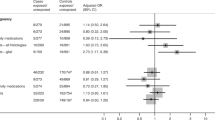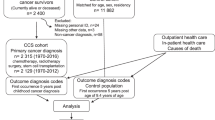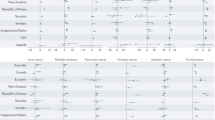Abstract
Attention has recently focused on the possible teratogenic effects of the combination antiemetic doxylamine succinate, dicyclomine hydrochloride and pyridoxine hydrochloride (Debendox/Bendectin) prescribed to pregnant women. The Inter-Regional Epidemiological Study of Childhood Cancer (IRESCC), a case-control investigation has analysed data derived from interview reports and medical records of 555 mothers of children (under 15 years) with cancer and 1110 mothers of matched control children. Separate analyses of interview reports and medical records both suggested that antiemetic ingestion during the index pregnancy does not increase the risk of developing childhood malignant disease in the exposed foetus. No dose-response relationship was evident. The lack of any significant relative risks held good for diagnostic sub-groups and when the trimester of ingestion was considered. Our results suggest that antimetics of this type are unlikely to be transplacental carcinogens.
This is a preview of subscription content, access via your institution
Access options
Subscribe to this journal
Receive 24 print issues and online access
$259.00 per year
only $10.79 per issue
Buy this article
- Purchase on Springer Link
- Instant access to full article PDF
Prices may be subject to local taxes which are calculated during checkout
Similar content being viewed by others
Rights and permissions
About this article
Cite this article
McKinney, P., Cartwright, R., Stiller, C. et al. Inter-Regional Epidemiological Study of Childhood Cancer (IRESCC): Childhood cancer and the consumption of Debendox and related drugs in pregnancy. Br J Cancer 52, 923–929 (1985). https://doi.org/10.1038/bjc.1985.278
Issue Date:
DOI: https://doi.org/10.1038/bjc.1985.278
This article is cited by
-
Cancers des enfants et contaminants de l’environnement
Canadian Journal of Public Health (1998)
-
Environmental risk factors for primary malignant brain tumors: A review
Journal of Neuro-Oncology (1993)



